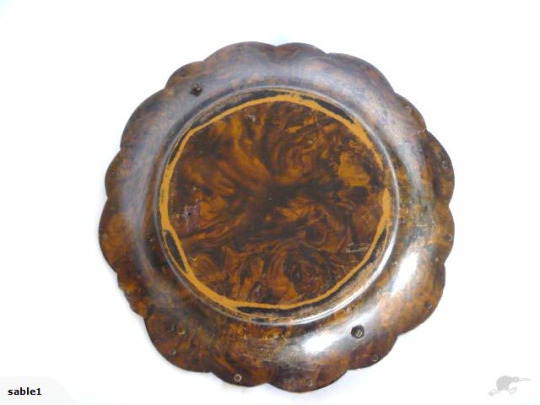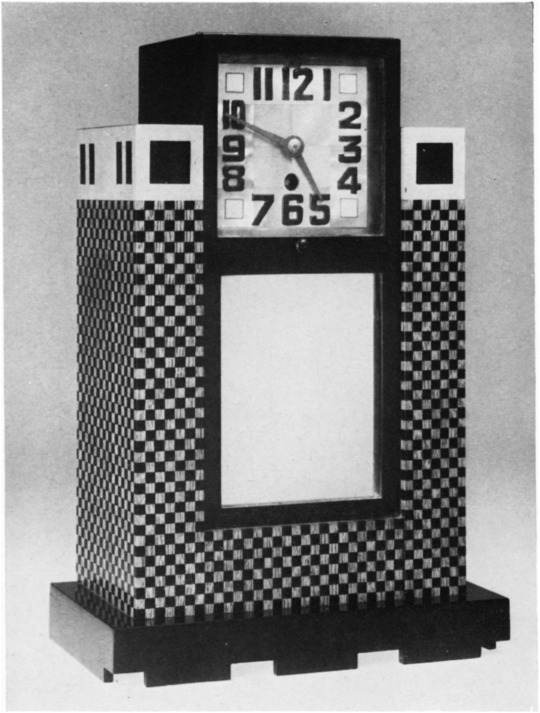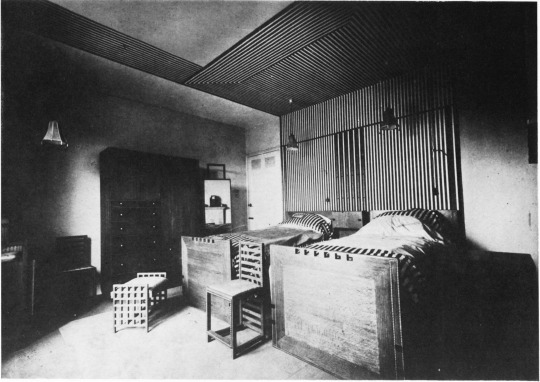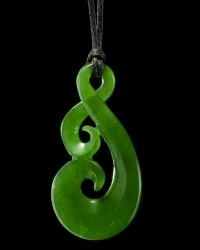Text
Assignment 5: Academic Writing
Bibliography
Parry, L & Livingstone, K (2005) International Arts and Crafts. London: V & A publications
Jenson, R & Conway, P (1982) Ornamentalism. New York: General Publishing Company Limited
Trilling, J (2003) Ornament A Modern Perspective. Canada: University of Washington Press
Assignment 5 Academic Writing
Can the unification of both Ornament and the Arts and Crafts influence a change to design ideas today?
Ornament, unpopular during a time when the more industrialised and truthful design styles developed. Example of that was the Arts and crafts movement in the mid 1800’s.
However both opposites could change the influence on designing today when combined together.
Ornament itself would never return to its elegance of its past ordain era. However the basic elements of imitating nature can bring a new perspective into the ever changing ideals of modern designing. Design “is to be free from all Improprieties”(Jenson and Conway 1982, p4) that it should value expression and enjoyment. One could say that ornament or rather the “false principles of design” (Trilling 2003, p167) can create an illusionistic form that excites the visual senses. Arts and Crafts mainly focussed on “the freedom of expression of the individual craftsman” (Livingstone, 2005, p43) and the joy of labour. “It embraced a simpler way of life” (Livingstone 2005, p42) for which design is about being free and enjoying life. Both styles would be able to complement each other by blending the best elements into one whole piece.
As much as the two styles are complete opposites, both share a common importance of freedom. It is through this freedom that will truly influence the change of today’s design ideas.
0 notes
Text
ASSIGNMENT 4: Trade me Hunt
Below are the images and critique of my choosen trade me object for this task
0 notes
Photo



Note: The name shown on the bottom left of the image is the username of the seller for the antique from the trade me website: http://www.trademe.co.nz/antiques-collectables/furniture-woodenware/woodenware/pre-1900/auction-591213814.htm
0 notes
Text
ASSIGNMENT 4: Trade me Hunt
Antique Papier-mâché Cake Dish.
I found an original antique cake dish on trade me that was designed in the early 1800s by designer unknown. I noticed that the style is that of the arts and crafts movement. As you can see on the images above, the brass fittings have gothic like arrows symmetric and corresponding to each other.
I can see that the antique was handcrafted in some sort of way because of the simple fact that; have you ever heard of a machine making a papier-mâché ornament? The birds-eye-view image of the antique demonstrates the slight uneven form of the antique. In the source, "The Stones of Venice", John Ruskin quotes, " you can teach a man to draw a straight line, and to carve it; and to copy and carve any number of given lines or forms, with admirable speed and perfect precision…” He explains further that a man is not defined by the perfection of a straight line, but the understanding and error of his mistake.I truly agree with his belief that handcrafting gives the creator the better experience of what creation is truly about, that it is not mass produced and emotionless, but full of life and enjoyment.
I am currently debating whether the antique is of good or bad design. The actual construction of the design is made out of paper yet the paint coating on the antique is grained painted. Augustus Welby Northmore Pugin would have suggested that the design was of “false principles”, that the grain paint would have implemented the false impression of wood. Pugin quotes, “It is alright to decorate construction but never construct decoration." This quote is relevant to the antique that it is of bad design from Pugin’s point of view, where-as the actual creation of the antique is of convincing importance to how I believe should be good design.
Overall I think that the Papier-mache Cake Dish is a very good design as the combination of both abstraction and craftsmanship of the design would have compiled the creator into making something that was enjoyable and fulfilling.
0 notes
Photo

Embodied Simplicity
This design is in some what inspired from a combination of two
precedent images. “In water”, by Josef Alber and “Gravitation”,
by Wassily Kandinski. The form incorporates a repetitive pattern
of bold S-Shaped curvatures which are slightly parallel to each other
on the right of the poster. The pattern symbolises the very nature of
rococo design to its simpliest form by the use of curves and fluid movement. It is equally as delicate as it is sharp. The use of yellow demonstrates the
relation of luxurious material such as gold and also the feeling of comfort,
warmth and happiness which transpires in rococo. Opposite the fluid
form on the left is the more obtuse and masculine form of the
straight line. This form is influenced from the modernism time of
the 1800s and beyonds. This shows a structure of rectangular
patterns similar to the German bauhaus designs in the 1920s
The colour variations of each rectangle show
abstraction yet still able to illustrate the boldness,
symmetry and sturdiness of modern bauhaus design
compared to the fluid curve. Simplicity is
the main purpose of the this design as
this composes the two differentiations of
styles of both the curve and Straight line
or rather rectangles. The illustration of these
two styles can creates a vivid comparison of
how design has changed over the centuries yet still can design today.
0 notes
Link
A link to assignment 2 powerpoint presentation via Chandler Heath slideshare link. View if quality of tumblr version of slideshow is poor due to a problem in embedded source code copy
0 notes
Text
Dsdn 171 Assignment 2: Powerpoint presentation
1 note
·
View note
Text
Assignment One: Part Two - The Library
A place of vast information and History. Its towering walls of knowledge can compel us into a dimension of inspiration and understanding. The more we attune ourselves to its presence the more we see its relevance to us. I can say for myself that the Library has a very strong influence in the way that we can expand on our knowledge by reading and comprehending books. It is a place of important resource that we can all use to help innovate our minds with creativity especially for design. We come to a library to find specific books with specific aspects to inspire our thoughts and perceptions. I believe that without a library the true purpose of searching for knowledge will become absent. To a certain extent we can rely on the internet as a sped up process of researching. But if we look into the very soul of a book, then we will truly see the deeper meaning of the information and we can truly understand what we are meant to search for. The images, quotations and contents of a book can bring us into imaginary creation of thought and idea that will heighten our knowledge in design. The atmosphere of the library itself can mesmerise the mind into deep thought and calm but at the sametime create ideas specific to your tasks. I know how relevent the library is and how I can use it to influence my growth and knowledge in all fields of learning especially design.
0 notes
Photo


ASSIGNMENT ONE: Images...These images are copied from Source Two in my APA referencing. These images show two examples of Charles Rennie Mackintosh's design capabilities. We can assume that He has extensive skills in design and architecture.
0 notes
Text
Assignment One: part one - dsdn 171
In my first task I am required to find four sources of information regarding to my research theme, Charles Rennie Mackintosh. Also I am required to look for two images that relate to my research theme.
Source One:
Mackintosh, Charles R (1868 - 1928) & Robertson, Pamela (1955) Charles Rennie Mackintosh: the architectural papers. White Cockade in association with the Hunterian Art Gallery
Source Two:
Ellen Sharp, Charles Rennie Mackintosh's "Pentunias" Bulletin of the Detroit Institute of Arts, Vol 80. No. 1/2, Graphic Arts (2006). pp.36 - 41
Source Three:
Roger Billcliffe & Peter Vergo, Charles Rennie Mackintosh and the Austrian Art Revival: The Burlington Magazine, Vol 119, No. 896, Special Issue Devoted to European Art Since 1890( Nov,1977) pp. 739 - 746
Source Four:
Arcades for Lucknow: Patrick Geddes, Charles Rennie Mackintosh and the Reconstruction of the city. Architectual History, Vol 42 (1999) pp. 316 - 332
Source Five:
Mackintosh's Masterwork: Charles Rennie Mackintosh and the Glasgow School of Art. Chronicle Books (1989)
0 notes
Text
Welcome to Design 171 2013!!! :D
My name is Heston Hawe I'm currently studying towards a degree in Media design. I really enjoy the very nature of design and how we can express its concepts through our very experiences. I have been intreged by design since I was young and to come and study at Victoria University has given me a new foundation and awareness of what design can do for all of us. I am looking forward to continuing on with design so that one day I can express design to others.
0 notes
Photo

"Our guiding principle was that design is neither an intellectual nor a material affair, but simply an integral part of the stuff of life, necessary for everyone in a civilized society.”
Walter Gropius (1883-1969)
0 notes
Text
Technology + Progress
The Bauhaus in 1919 founded by Walter Gropius, had a philosophic concept that it is not about the beauty of the object, but the capability of the object for people. Under political circumstances, the bauhaus was formed to help improve productivity within Germany as relations between them and other nations were in turmoil due to the previous war. Gropius had the idea that the designs are used for productivity and the functionality. Use of geometry in many bauhaus objects resembles classicalism; the form of squares, lines and triangles show the status or hierarchy power of the object/ nation. It was this idea that was used to symbolise Germanys power in design, that their way of innovation is the best way. In some cases it is true because it was this movement that revolutionised the style and creativity of modernism today. With objects such as chairs and desk lamps, the concepts of today still resemble this bauhaus form and that the limitations of what can be defined as appropriate design are still engraved now. However freedom of expression was frequently used during the bauhaus era and craftsmanship was applied. Craft and fine arts were considered opposites in the past and the Bauhaus articulated these two design structures to form something both expressive and functional.
During my first year in design innovation I remember encountering a course which corresponds the ideas and principles towards design. The first project was creating a cardboard and wire model from two images. My design consisted of straight lines and triangles. It resembled a fox. The task was required to reduce the complexity of the craft. The bauhaus and the modern design of my model have the same similarities which I find very interesting. It relates back to the geometry of the object and the function. The course communicated the idea of simplicity, symmetry and geometry, in which the bauhaus did. It also gave free expression of creatvity but still showed the limitations to ensure more of the function. I believe that the beauty of a design can be found by simplifying any unnecessary parts to a design rather then complicating the concept. It was the bauhaus that familiarised that idea even more.
0 notes
Text
Modern Vision
"To an ever greater degree the work of art reproduced becomes the work of art designed for reproducibilty. From a photographic negative, for example, one can make any number of prints; to ask for the authentic print makes no sense". Walter Benjamin writer of 'The Work of Art in the Age of Mechanical Reproduction' says that 'print' is not considered authentic but more the idea of mechanical reproducing. The point he is trying to argue is that authenticity comes from the practice of craft. To begin with, the word authentic is defined as something unique and original, yet print is defined as a copy or replica of something 'authentic'. This is why Walter Benjamin believes that 'print' has no sense of meaning when it comes to authenticity.
When something is considered as authentic in mechanical reproducing, I agree that authenticity has a major role in digital design and manufacturing. The concept of manufacturing is to focus on the mass production of a certain design or product, creating continuous replicas of the first concept. What is noticed is that something that is printed must first replicate the original or 'authentic'. Without the authentic piece, one can never be able to imitate or copy. I disagree with walter Benjamin's statement because there always needs to be a prototype before the replicas. Photographs can be duplicated over and over again but will always have an authentic beginning.
0 notes
Photo

Pounamu necklace designed by Ross Crump
0 notes